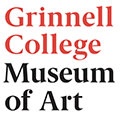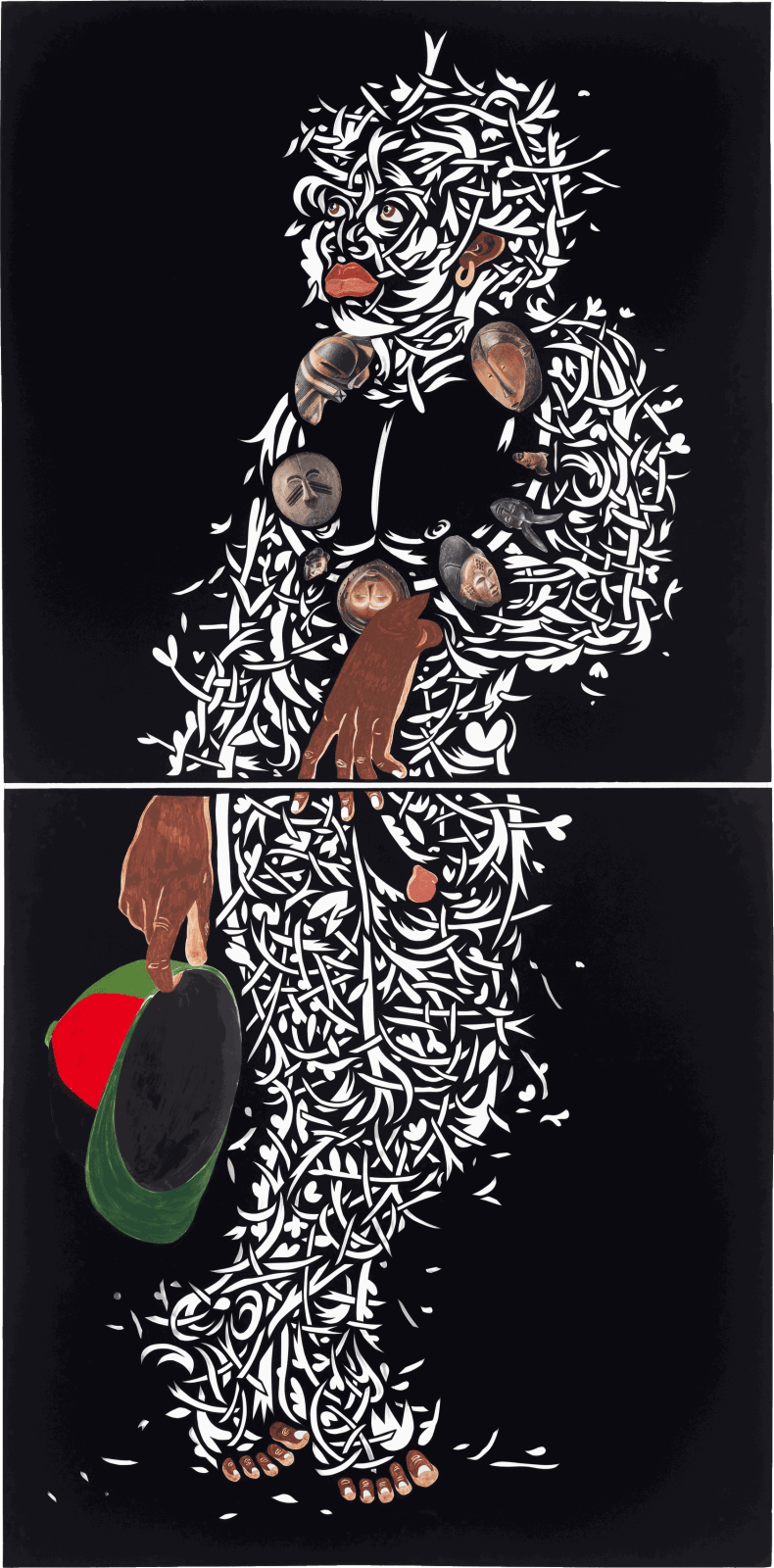-

William Villalongo
Obertura de la Espora (Time Dancer), 2017Acrylic, paper collage and cut velour paper80 1/4 x 39 1/2 in. Sheet
2 Sheets, 40 1/8 x 39 1/2 in. each
85 1/4 x 44 5/8 in. Frame
Grinnell College Museum of Art Collection (2018.043)Villalongo borrows the composition for Obertura de la Espora (Time Dancer) from a painting of Jean-Baptiste Belley, an enslaved Haitian who became deputy to the French Convention responsible for abolishing...Villalongo borrows the composition for Obertura de la Espora (Time Dancer) from a painting of Jean-Baptiste Belley, an enslaved Haitian who became deputy to the French Convention responsible for abolishing slavery in the French colonies. In the 1797 painting, Belley leans against a bust of Raynal, an abolitionist French philosopher, and carries the feathered hat of the liberator of Haiti, General Toussaint L’Ouverture. It is a piece brimming with Black history and emblematic of Villalongo’s mission to reveal figures who have been erased or underserved by history. In conversation with Torkwase Dyson, Villalongo said of this piece, “I couldn’t talk about movement, blackness, and masculinity without recognizing exceptional figures that remind me of how powerful our movements have been in the face of adversity.”
For Villalongo, the use of African masks in his work is a reference to deep time – time that expands deep into history. This is hinted at by the title, which loosely translated from Spanish means ‘overture of the spores.’ Spores are produced by plants and protozoa for survival or reproduction. Some bacterial spores can go into a vegetative state for centuries until conditions are right and can survive desiccation or chemical disinfectants. This is a piece about survival in impossible conditions and remembering important Black figures past, present, and future.
Excerpt from Tiffany Barber's essay, "Deep Cuts":
Surrounded by dense, black velvet air, Villalongo’s time dancer flips Belley’s stance and leans to the left. The subject exudes sensuality as he hovers and rests against an invisible podium, dispensing with the pastoral landscape and the figure-ground conventions present in the original artwork. The saturation of the black velour rivals the sharpness of the white incisions that contour the body. Composed and debonair, Villalongo’s figure additionally — crucially — has two left feet. He is out of step and out of time, suspended in space. Adorned with a necklace of collaged African masks that double as charms, the time dancer’s eyes, lips, ears, penis, toes, and hands (one of which holds a red, black, and green fitted hat — another ode to hip-hop and the visual culture of Black liberation) are rendered in acrylic paint. Each of the choreographed cuts of flora, twigs, branches, and heart-shaped leaves in Obertura de la Espora is an opening that signals a new beginning in the artist’s practice, a proposal for a different understanding of Blackness and its embodiment in the age of #BlackLivesMatter. #BlackLivesMatter, the viral social media protest that has ballooned into a global movement, forms part of the sociopolitical backdrop for Villalongo’s work.


